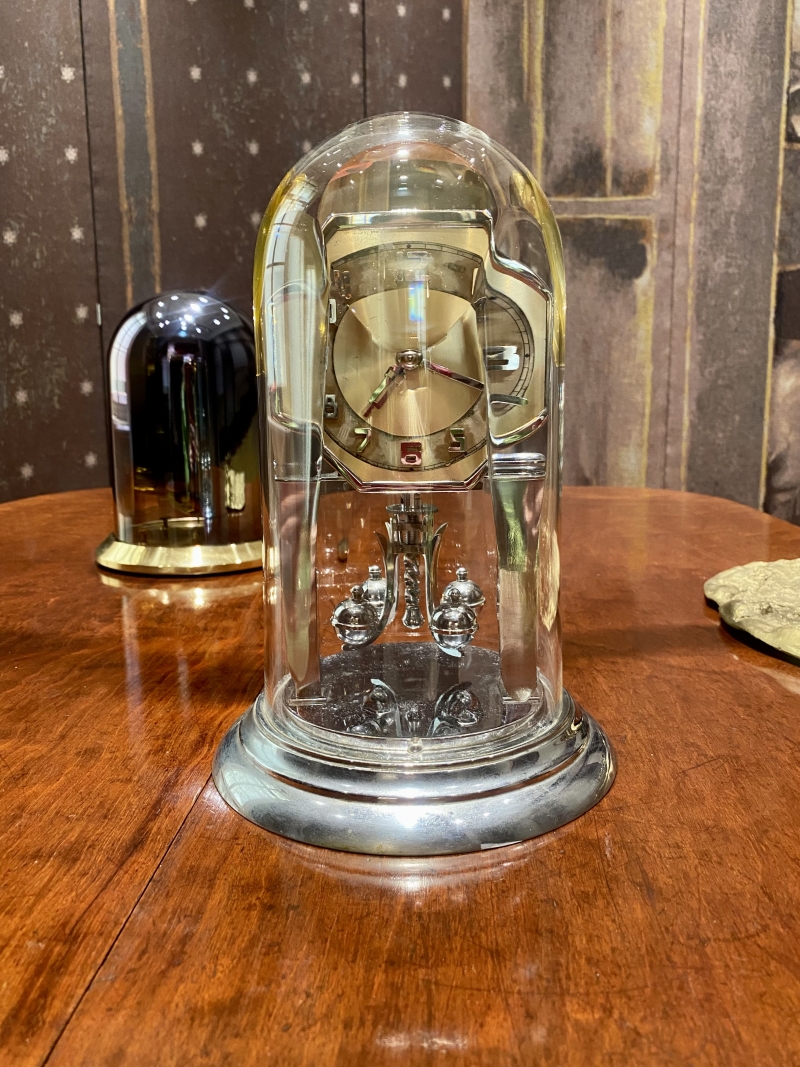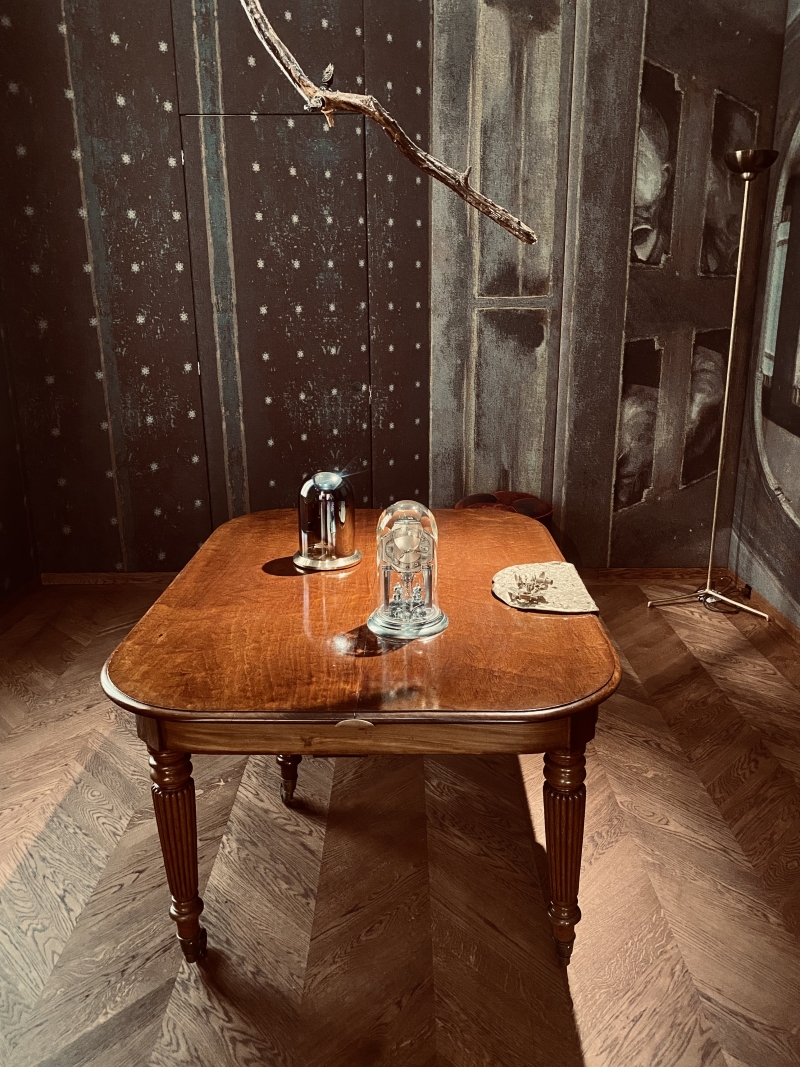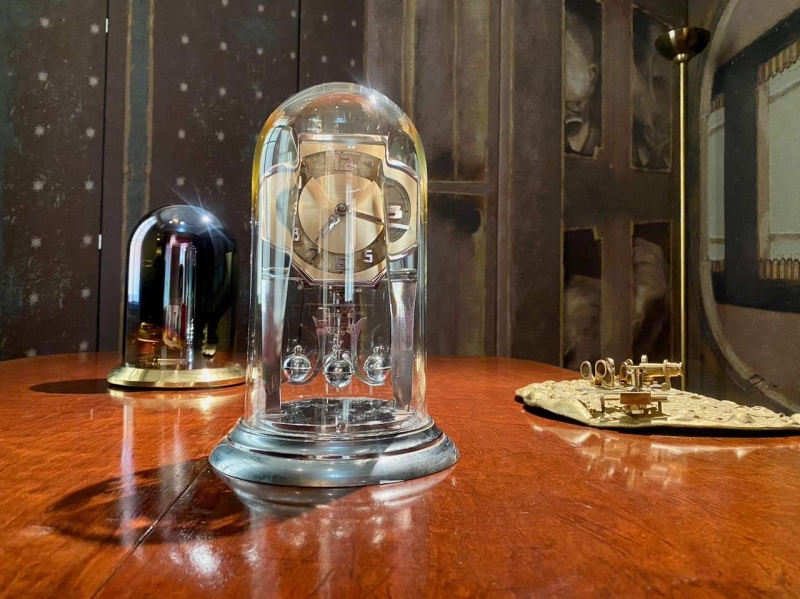Christmas Tree 2022
Exhibition

Manfred Erjautz - Fragments of a beauty



• Fragments of a beauty, 2018
Art Deco torsion pendulum clock, England (c. 1920); chrome-plated brass, bell jar, cast resin
• Against the day/Gegen den Tag, 2018
Magnetic pendulum clock of German origin (c. 1950); gold-coated bell jar; brass, glass, chrome-coated base, gold-coated finish (0.02 grams)
• Der Zweifel ist mein Antrieb, die Kante ist mein Pfad/Doubt is my drive, the edge is my path, 2018 Bronze cast of a pizza with model sextant; aluminum-bronze, brass
• Das Tier/The animal, 2020
Wood, 4 chess pieces (knights), cast resin
"The present sits at the epicenter of time. It is that infinitely brief moment between past and future that can never be captured."
Clocks are recurring subjects in the work of artist Manfred Erjautz, due to both their physical ability to measure time and their aesthetic qualities. The concept of time arises in the field of tension between objective measurability and subjective perception and experience.
In the work Fragments of a beauty, lens-like recesses in the glass dome of an anniversary clock prevent it from being seen in its entirety, with only fragments of its movements visible to the eye. These details appear distorted, despite the magnification achieved through the lenses, and the resulting interplay of reflections and refractions symbolically subverts our idea of a linear progression of time.
Named after Thomas Pynchon’s novel of the same name, the work Against the day/Gegen den Tag was created by Manfred Erjautz in collaboration with the Institute of Solid-State Physics (Dr. Gunther Leising) at the University of Technology in Graz. Within a vacuum, they used thermal evaporation to deposit gold molecules onto the glass case interior of a magnetic pendulum clock. The gold coating obfuscates the clock inside, only revealing small details and an impression of the device’s silhouette. The time can no longer be read and the beauty of the clock is hidden. The mechanism, however, remains intact and its ticking manifests the unstoppable passage of time.
End-time echoes can be found in the work Der Zweifel ist mein Antrieb, die Kante ist mein Pfad/Doubt is my drive,the edge is my path, which references a medieval worldview through its disc shape that seems to slip into nothingness, hinting at an ominous future. The four chess pieces in the work Das Tier/The animal appear like horsemen of the apocalypse and convey the menace of the hovering sword of Damocles.
#manfred erjautz

